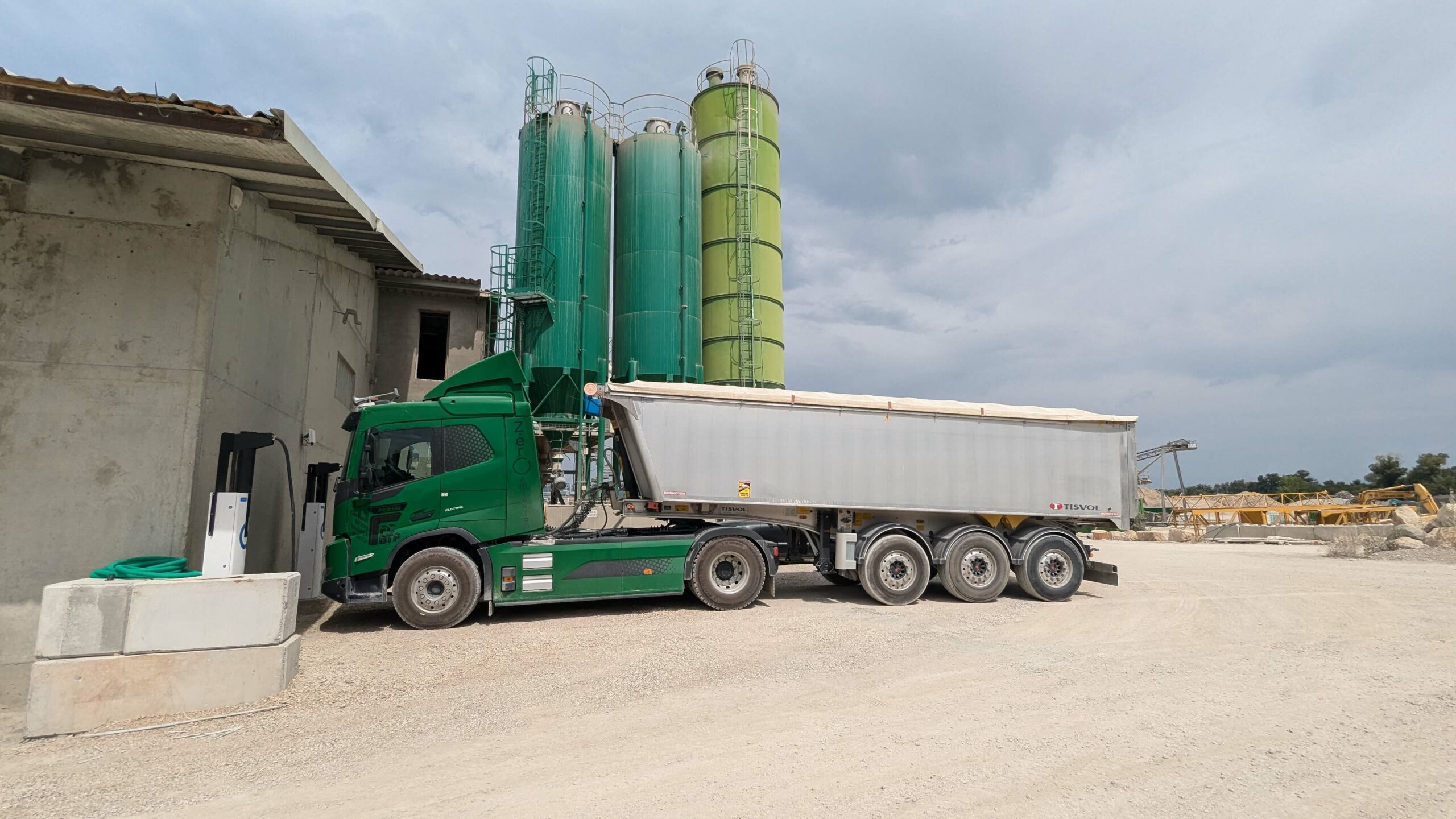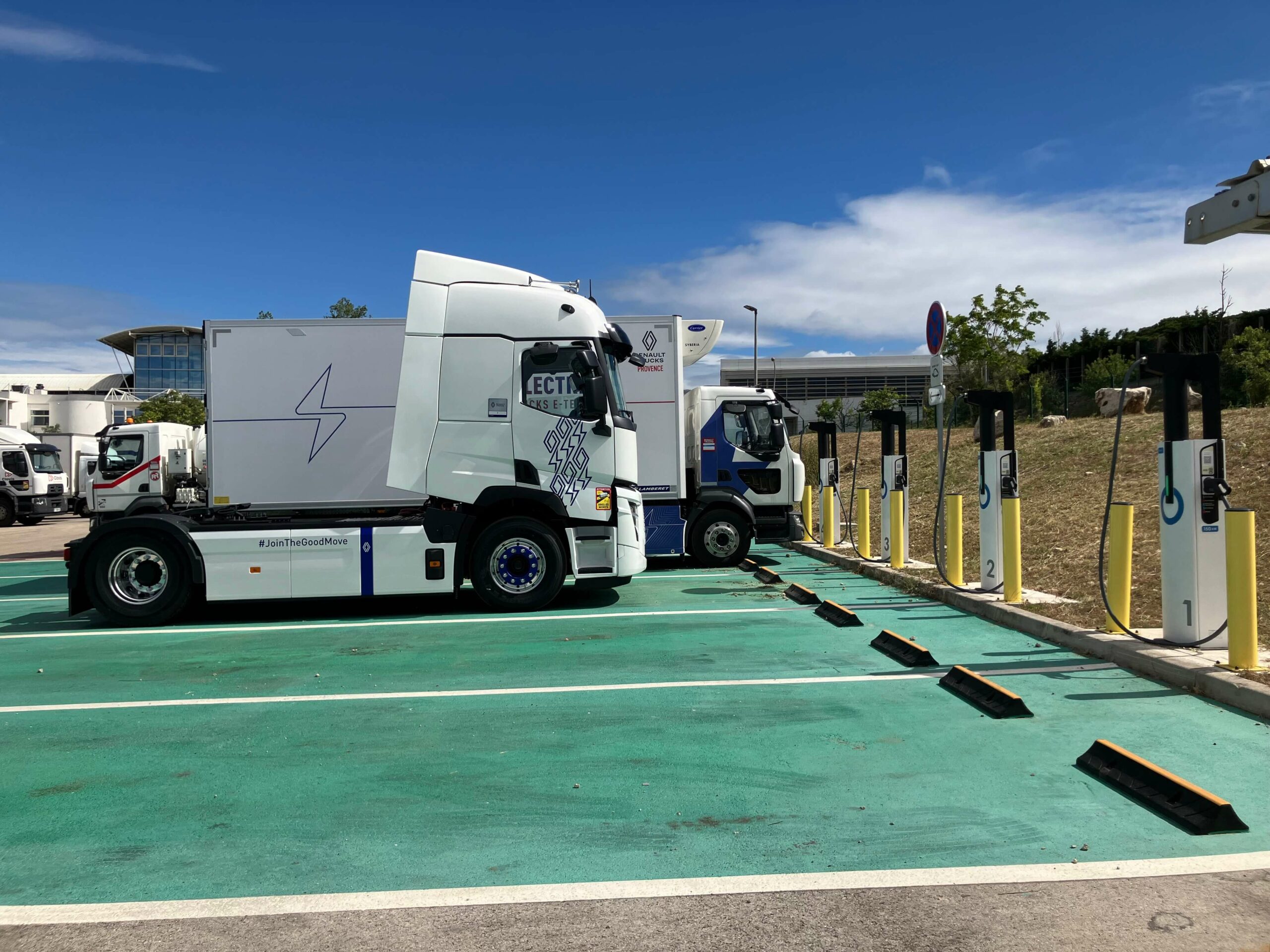The transition to electric fleets requires optimal, high-performance and flexible recharging solutions. At Chargepoly, we’ve designed a distributed DC charging architecture that meets the specific needs of truck and bus fleets. This innovation turns challenges into opportunities. Let’s explore the differences between conventional DC systems and our distributed DC architecture, and discover how the latter brings modularity, flexibility, scalability, reliability and energy efficiency to our customers.
Classic DC vs. Distributed DC: understanding the fundamentals
Classic DC: juxtaposition of autonomous terminals
In a conventional DC configuration, each charging station is autonomous, with its own integrated power conversion modules. Although this approach is commonplace, it has a number of drawbacks:
- Noisy charging stations: integrating the power conversion modules makes the charging stations bigger and noisier, taking up more space and creating a noise nuisance for users.
- Sub-optimal use of space: for the same surface area, fewer charging stations can be installed, limiting charging capacity in a given space (or reducing the number of available parking spaces).
- Wasted power: when the bollard is not charging, the power dedicated to it remains unused, resulting in energy inefficiency.
Distributed DC : The flexible architecture
Distributed DC architecture shares the station’s power conversion modules between several load satellites. This approach offers numerous advantages:
- Narrow, silent charging station: by offsetting the conversion modules, our charging stations are more compact and silent, improving the charging environment.
- Space optimization: for an equivalent surface area, our architecture enables us to install an optimal number of charging stations, increasing charging capacity and integrating easily into existing parking spaces.
- Full utilization of incoming power: the sharing of converter modules enables dynamic distribution of installed power, ensuring that it is always optimally utilized, even when some satellites are not under load.
The advantages of Chargepoly's Distributed DC architecture
Our solution is based on a specific distributed architecture patented by Chargepoly, based on multiple charging lines, with key advantages for commercial fleets.
Scalability
Our distributed architecture makes it easy to add new charging satellites to meet growing demand. This means you can expand your charging infrastructure without major retrofits, ensuring rapid and cost-effective ramp-up.
Reliability
Our charging stations are more resilient to breakdowns thanks to our multiple charging line scheme. We reduce the risk of charge point unavailability, ensuring continuous charging for your vehicles.
Efficiency
We optimize the use of total installed power, reducing waste and making the most of all station resources.
At Chargepoly we’re convinced that distributed DC architecture represents the future of electric charging for truck and bus fleets. To find out more about our fast charging stations and discover how Chargepoly can support your transition to electric mobility, visit our dedicated charging solutions page.




